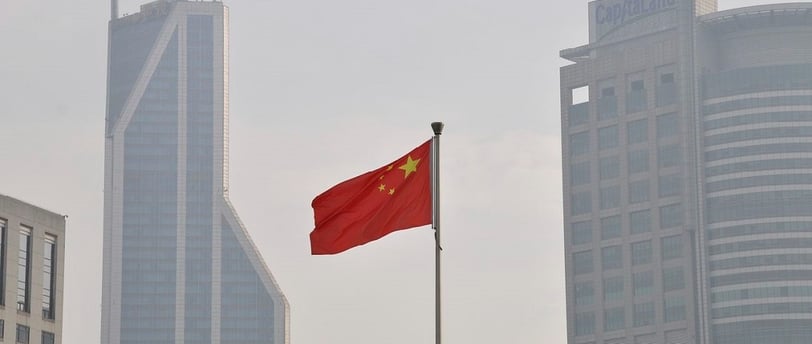China Flexes Its Leverage in U.S. Trade Talks — And the World Is Watching
China gains new confidence in trade negotiations with the U.S., using its rare earth dominance as leverage. Discover how Beijing is reshaping power dynamics in global trade.
6/19/20253 min read


China Leverages Rare Earth Power to Gain the Upper Hand in U.S. Trade Talks
While President Trump celebrated the latest U.S.-China trade agreement as a major win for America, experts say China may have walked away with even greater strategic value. The outcome of the recent talks, held in London, reveals that Beijing has learned how to use its leverage—especially over rare earth exports—to influence Washington.
This evolving dynamic marks a shift in the balance of power in global trade negotiations and showcases how both sides are recalibrating their tactics.
What Did China Learn From the Talks?
Although the deal largely reinstates a previous agreement from May, Chinese officials now recognize that the U.S. may be more eager for a deal than previously believed.
“China feels it has more bargaining power than it originally expected,” said Liu Dongshu, political analyst at City University of Hong Kong.
China’s muted tone contrasted with Trump’s loud proclamations on social media. While Trump praised the deal for granting the U.S. access to Chinese rare earth minerals, Beijing highlighted the importance of equal dialogue and cooperation.
Rare Earths: China’s Trump Card in Global Trade
Rare earth elements—used in everything from smartphones and electric vehicles to military aircraft—have become a critical bargaining chip for Beijing.
In April, China added seven rare earth minerals to its dual-use export control list.
This move disrupted global supply chains and gave China tactical leverage in negotiations.
The U.S. quickly responded during the May Geneva talks, hoping to secure steady access to these minerals. But after trade tensions escalated again, Beijing held back exports—highlighting just how much the world depends on Chinese supply.
“They now know they have real leverage over the U.S.,” said Bert Hofman, former World Bank director for China.
China’s Expanding Toolkit: More Than Just Minerals
In addition to rare earths, China is increasingly willing to use export controls, drug enforcement policies, and regulatory tools as part of its broader trade strategy.
Beijing recently added nitazenes and other synthetic opioids to its list of controlled substances—likely a gesture to address U.S. concerns about fentanyl.
Chinese officials are also tightening tech export reviews, reinforcing their ability to respond to U.S. sanctions.
“China now has more ‘killer daggers’ to target U.S. companies,” said Yao Yang, professor at Peking University.
Is the U.S. Losing Control of the Trade Narrative?
The Trump administration’s approach to China has included steep tariffs, technology restrictions, and public pressure on American companies to bring manufacturing home. But internal shifts suggest Washington is under increasing pressure to strike deals quickly.
U.S. tariffs on Chinese goods remain at approximately 55%, according to Trump.
In contrast, China is maintaining tariffs closer to 10%, though details remain vague.
Trump’s unpredictability is also being scrutinized abroad. In Chinese media and academic circles, the nickname “TACO” (Trump Always Chickens Out) is gaining traction—pointing to a belief that Trump often blinks at the last minute.
“He changes his mind too frequently. That’s no good for serious negotiation,” said Wang Yiwei of Renmin University.
Strategic Optics: Xi Jinping as Trump’s Equal
Beijing is also embracing the symbolism of equality. Chinese state media has framed recent talks as proof that the U.S. now comes to China as a peer, not as a dominant force. Trump even floated the idea of inviting China to join the G7, a move Beijing welcomed as symbolic validation of its global status.
What Comes Next in U.S.-China Relations?
Despite Trump calling the deal “done,” many core issues remain unresolved:
Technology access for Chinese firms is still restricted.
Tariff rollback is incomplete.
Market access and currency policies are still under negotiation.
Chinese officials emphasize that the current deal is part of an ongoing process—not the final word.
“If the U.S. picks a fight, we will fight back. If it wants to talk, we are ready to talk,” said one Chinese official.
Beijing is likely pushing for a comprehensive agreement that includes tariffs, export control relief, and deeper economic cooperation. But whether that happens during Trump’s term remains uncertain.
Key Takeaways
China is now leveraging its rare earth dominance and policy tools to shift the balance in U.S. trade talks.
Trump’s unpredictability may give Beijing more room to maneuver.
The latest deal is more symbolic than transformative, but it signals China’s growing confidence on the global stage.
The next phase of negotiations could shape not just U.S.-China relations, but the future of global trade architecture.
Finance
Tips and insights on the financial market.
This blog uses artificial intelligence as a tool for article creation.
Blog
news
© 2025. All rights reserved.